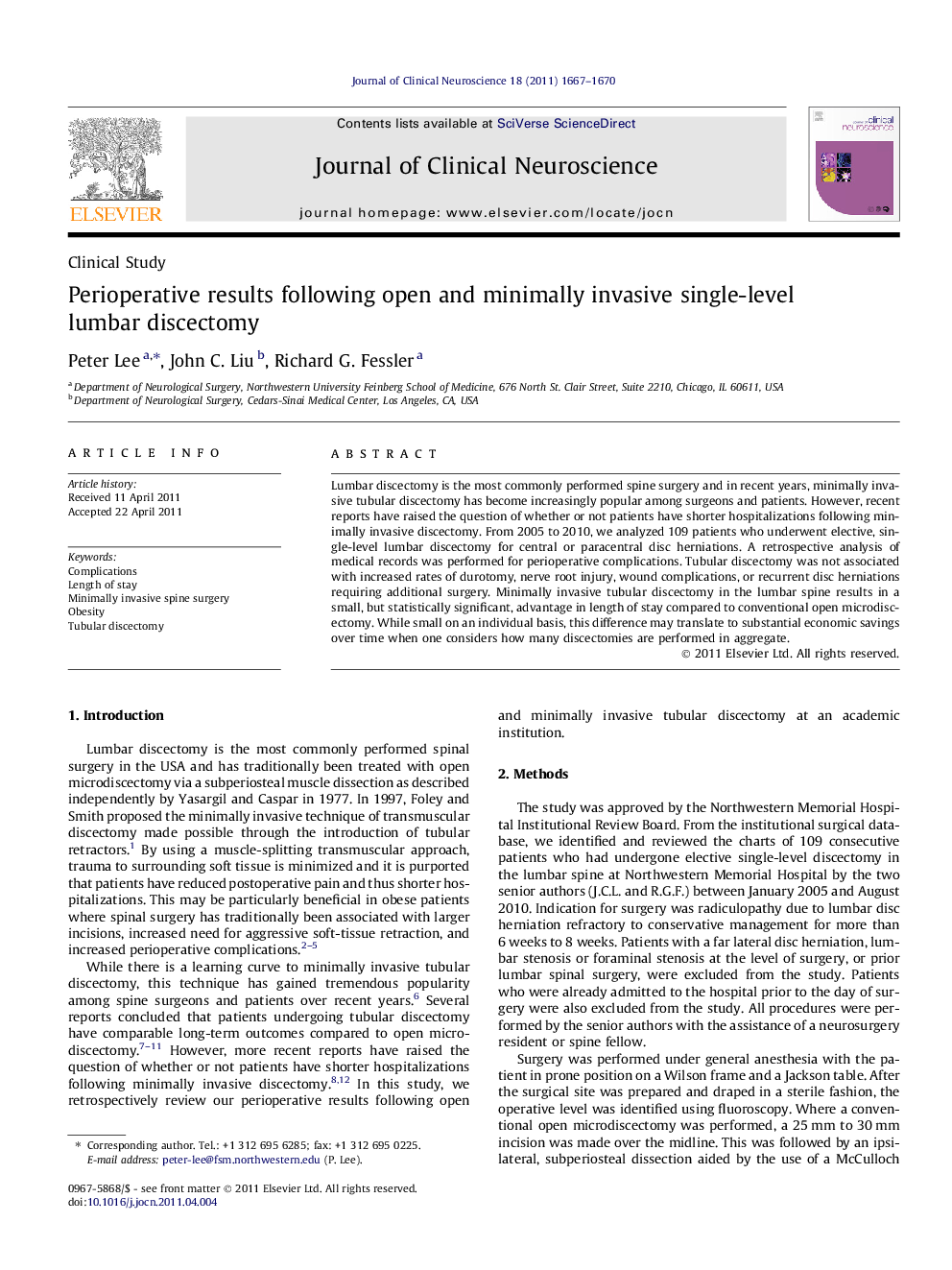| Article ID | Journal | Published Year | Pages | File Type |
|---|---|---|---|---|
| 3061251 | Journal of Clinical Neuroscience | 2011 | 4 Pages |
Lumbar discectomy is the most commonly performed spine surgery and in recent years, minimally invasive tubular discectomy has become increasingly popular among surgeons and patients. However, recent reports have raised the question of whether or not patients have shorter hospitalizations following minimally invasive discectomy. From 2005 to 2010, we analyzed 109 patients who underwent elective, single-level lumbar discectomy for central or paracentral disc herniations. A retrospective analysis of medical records was performed for perioperative complications. Tubular discectomy was not associated with increased rates of durotomy, nerve root injury, wound complications, or recurrent disc herniations requiring additional surgery. Minimally invasive tubular discectomy in the lumbar spine results in a small, but statistically significant, advantage in length of stay compared to conventional open microdiscectomy. While small on an individual basis, this difference may translate to substantial economic savings over time when one considers how many discectomies are performed in aggregate.
